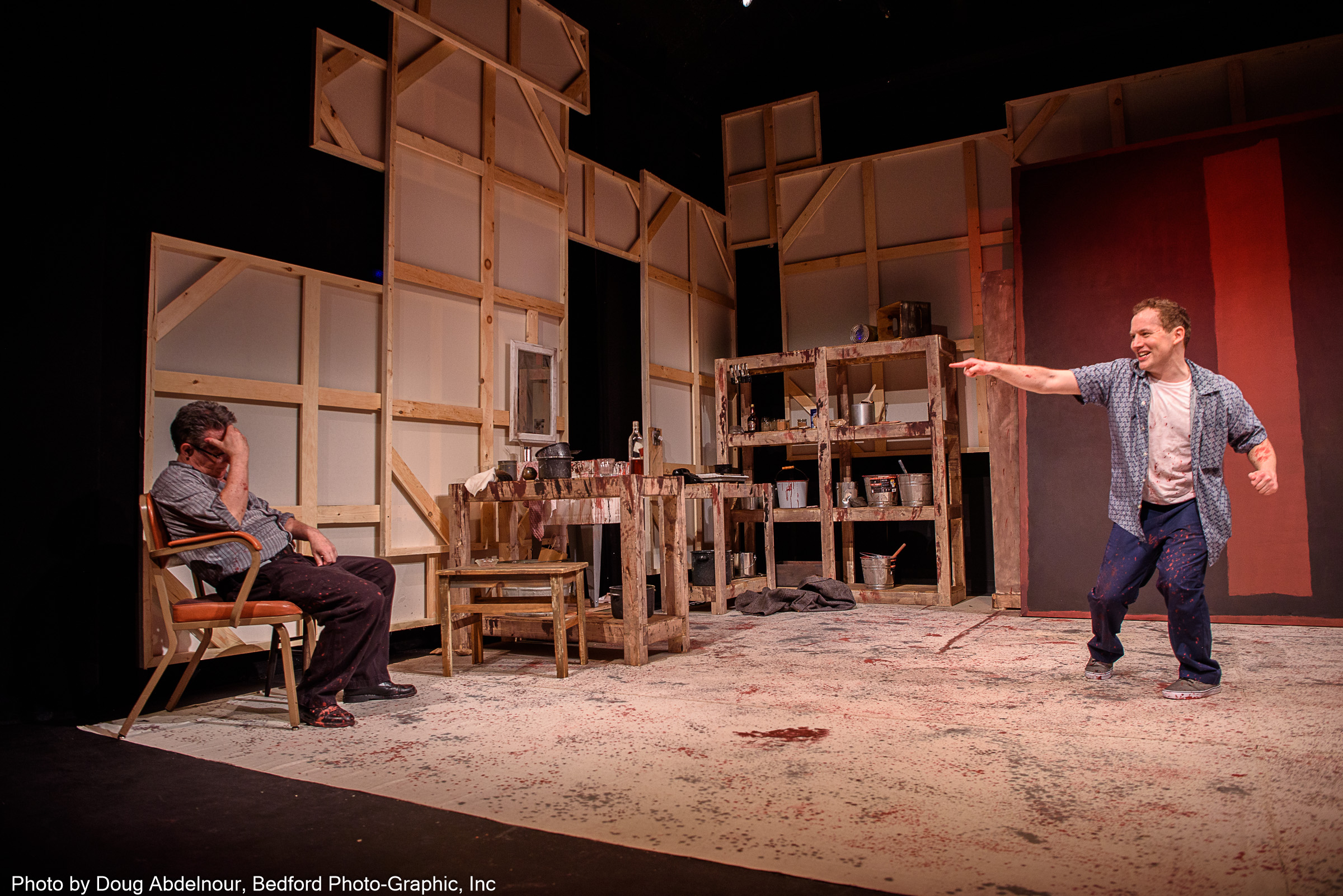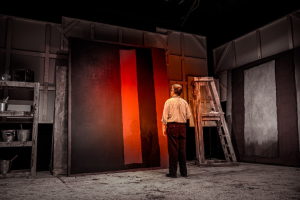Rothko’s Chapel

Many artists long for financial success. Their integrity is often a barrier to such a result. Such was the case with Mark Rothko, who received a commission of $35,000, which was unheard of in 1958, to create a series of murals for the Four Seasons restaurant in Manhattan, part of the then-new Seagrams building designed by Mies van der Rohe and Philip Johnson. Mark Rothko’s internal conflict is the subject of an engrossing play at the Schoolhouse Theater called Red.
Rothko created some 37 paintings for this commission that he envisioned being hung together, creating a temple or chapel-like setting. When he went to the Four Seasons for dinner, he was deeply disappointed, as the vision he had for the paintings conflicted with the atmosphere of this upscale restaurant with its clinking of wine glasses, forks and knives. He saw this an anathema to his vision. Ultimately, he returned the commission and kept the paintings, and years later donated seven of them to the Tate gallery in London.
So much for his dream of a sacred space and commercial success. However all was not lost. Rothko did achieve the sacred space he longed for in a chapel with 17 of his works hung together as he had always envisioned. According to Owen Thompson, the play’s director, Rothko never got to see the chapel that was created after his death. In preparation for directing the play, Thompson travelled to Houston, Texas to observe the Rothko works. He was deeply moved by the presentation. It confirmed for Thompson an essential element of Rothko’s vision — that the transaction between the observation and internalization by the viewer was a formative aspect of the artist’s practice. In the play, Rothko’s belief in the communication between the spectator and the work is artistically compelling.
As for the Schoolhouse Theater, which was closed during the pandemic, according to Artistic Director Bram Lewis, the fate of the theater had been a concern after the death of its founder, Lee Pope. The good news is the building has been purchased by the town of North Salem and reopened, and the play can be seen through April 30. It’s worth the trip.
Photo credit: Doug Abdelnour, Bedford Photo-Graphic, Inc.


Connect with Janet